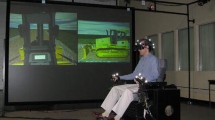Abstract
Digitalization in industry applies to all product life cycle’s stages. An automation of the early conceptual design phase promises to make use of the maximum benefit, since decisions in the early development phases have the greatest potential for reducing the product’s life cycle costs (Pahl et al. in Engineering design, a systematic approach. Springer, London, 2007). There are several approaches to automate the early development phase: from more individual code or script-based solutions to formalized design methods such as knowledge-based engineering or model-based systems engineering. Running high-fidelity simulations leads to an improved decision basis in the early design phase, where the significant decisions, as the product architecture, are taken. This work shows a generic interface between the Unified Modeling Language or Java and continuum mechanics (CM) engineering tools. The interface introduces an application-independent layer containing all the (product) information to create, run and postprocess CM simulations. The boundary and physical conditions are modeled application independently in their generic representations. This approach offers the following advantages: first, an easy creation of engineering workflows through the automated generation and execution of engineering simulations. Second, the engineer is freed from the need for simulation application-specific knowledge. Finally, development costs are saved as commercial simulation tools, become arbitrarily interchangeable with open-source simulation tools.










Similar content being viewed by others
Notes
In the following examples, the CAD representation is no longer displayed explicitly due to space constraints.
References
Antonsson E, Cagan J (2001) Formal engineering design synthesis. Cambridge University Press, Cambridge
Bhatia KG (2008) A perspective on optimization. In: Aeroelasticity and multidisciplinary optimization 12th AIAA/ISSMO multidisciplinary analysis and optimization conference
BKCASE Editorial Board: The Guide to the Systems Engineering Body of Knowledge (SEBoK) (2017) Adcock RD (EIC). Hoboken, NJ: The Trustees of the Stevens Institute of Technology. www.sebokwiki.org. Accessed 10 Apr 2018
Caremoli C, Ribes A (2007) Salome platform component model for numerical simulation. In: 31st annual international computer software and applications conference (COMPSAC 2007)(COMPSAC), vol 02, pp 553–564. https://doi.org/10.1109/COMPSAC.2007.185
Cencetti M (2013) Evolution of model-based system engineering methodologies for the design of space systems in the advanced stages of the project (phases b-c). Ph.D. thesis, Politecnico di Torino
Cooper S, Fan I, Li G (2001) Achieving competitive advantage through knowledge based engineering a best practice guide. Cranfield University, Bedford
Estefan J (2008) A survey of model-based systems engineering (MBSE) methodologies. Technical Report INCOSE-TD-2007-003-02, International Council on Systems Engineering
Gamma E, Helm R, Johnson R, Vlissides J (1994) Design patterns: elements of reusable object-oriented software. Pearson Education, London
Geuzaine C, Remacle J (2009) Gmsh: a 3d finite element mesh generator with built-in pre- and postprocessing facilities. Int J Numer Methods Eng 79(11):1309–1331. https://doi.org/10.1002/nme.2579
Goetzendorf-Grabowski T (2017) Multi-disciplinary optimization in aeronautical engineering. Proc Inst Mech Eng Part G J Aerosp Eng 231:095441001770699
Hwang JT, Martins JRRA (2012) Geomach: geometry-centric mdao of aircraft configurations with high fidelity. In: Proceedings of the 14th AIAA/ISSMO multidisciplinary analysis optimization conference. Indianapolis, IN. AIAA 2012-5605
The design compiler 43v2 (2005). www.iils.de. Accessed 20 Dec 2017
Kröplin B, Rudolph S (2005) Entwurfsgrammatiken—Ein Paradigmenwechsel? Der Prüfingenieur 26:34–43
La Rocca G (2012) Knowledge based engineering: Between AI and CAD. Review of a language based technology to support engineering design. Adv Eng Inform 26:159–179
Martins JRRA, Lambe AB (2013) Multidisciplinary design optimization: a survey of architectures. AIAA J 51:2049–2075. https://doi.org/10.2514/1.J051895
Moreno R, Bazan AM (2017) Design automation using script languages. High-level CAD templates in non-parametric programs. In: IOP conference series: materials science and engineering, vol 245
Pahl G, Beitz W, Feldhusen J, Grote KH (2007) Engineering design, a systematic approach. Springer, London
Reichwein A (2011) Application-specific UML profiles for multidisciplinary product data integration. Ph.D. thesis, University of Stuttgart
Rudolph S (2006) Know-how reuse in the conceptual design phase of complex engineering products—or: ”are you still constructing manually or do you already generate automatically?”. In: Conference proceedings integrated design and manufacture in mechanical engineering (IDMME), Grenoble, France
Rudolph S, Noser H (2000) On engineering design generation with XML-based knowledge-enhanced grammars. In: Proceedings IFIP WG5.2 workshop on knowledge intensive CAD (KIC-4), pp 22–24
Schmidt DC (2006) Model-driven engineering. IEEE Comput 39(2):25–31
Schmidt J, Rudolph S (2016) Graph-based design languages: a lingua franca for product design including abstract geometry. IEEE Comput Graph Appl 36(5):88–93. https://doi.org/10.1109/MCG.2016.89
Schroeder W, Martin K, Lorensen B (2006) The visualization toolkit. Kitware, New York
Simpson T, Martins J (2011) Multidisciplinary design optimization for complex engineered systems: report from a national science foundation workshop. J Mech Des. https://doi.org/10.1115/1.4004465
Sobieszczanski-Sobieski J, Morris A, van Tooren M (2015) Multidisciplinary design optimization supported by knowledge based engineering. Wiley, Hoboken
Verhagen W, Bermell-Garcia P, Dijk R, Curran R (2012) A critical review of knowledge-based engineering: an identification of research challenges. Adv Eng Inform 26:5–15
Vogel S (2016) Über Ordnungsmechanismen im wissensbasierten Entwurf von SCR-Systemen. Ph.D. thesis, University of Stuttgart
Wang T, Truptil S, Benaben F (2017) An automatic model-to-model mapping and transformation methodology to serve model-based systems engineering. Inf Syst e-Bus Manag 15(2):323–376. https://doi.org/10.1007/s10257-016-0321-z
Ward A, Seering W (1989) Quantitative inference in mechanical design compiler. In: Proceedings1st DTM Conference, Montreal, Canada
Weller HG, Tabor G, Jasak H, Fureby C (1998) A tensorial approach to computational continuum mechanics using object-oriented techniques. Comput Phys 12:620. https://doi.org/10.1063/1.168744
Wymore A (1967) A mathematical theory of systems engineering: the elements. Wiley series on systems engineering and analysis. Wiley, Hoboken
Wymore A (1993) Model-based systems engineering. Series systems engineering. Taylor & Francis, Oxford
Acknowledgements
The work was supported by the project digital product life-cycle (ZaFH) funded by the European Regional Development Fund and the Ministry of Science, Research and the Arts of Baden-Wrttemberg, Germany (www.rwb-efre.baden-wuerttemberg.de).
Author information
Authors and Affiliations
Corresponding author
Additional information
Publisher’s Note
Springer Nature remains neutral with regard to jurisdictional claims in published maps and institutional affiliations.
Rights and permissions
About this article
Cite this article
Vogel, S. An application-independent continuum mechanics interface for virtual engineering. Engineering with Computers 35, 551–565 (2019). https://doi.org/10.1007/s00366-018-0617-3
Received:
Accepted:
Published:
Issue Date:
DOI: https://doi.org/10.1007/s00366-018-0617-3




